 | TODAY IN SCIENCE HISTORY
NEWSLETTER - 17 DECEMBER |
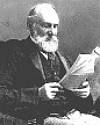 On 17 Dec 1907, Lord Kelvin died, the British physicist who has been called the Newton of his era. His contributions to science and technology were far-ranging, and not just related to the work for which his name later was adopted as the unit of temperature (the kelvin, K). The site has two biographies that will expand your knowledge of this remarkable Victorian era scientist. The shorter one on Lord Kelvin is a webpage from the very earliest days of this site (1999). You can also choose the chapter on Lord Kelvin from Sarah Bolton's book on Famous Men of Science. Did you know how he helped make the transatlantic telegraph cable possible? Or that he was born in Ireland, though spent most of his life in Glasgow, Scotland? On 17 Dec 1907, Lord Kelvin died, the British physicist who has been called the Newton of his era. His contributions to science and technology were far-ranging, and not just related to the work for which his name later was adopted as the unit of temperature (the kelvin, K). The site has two biographies that will expand your knowledge of this remarkable Victorian era scientist. The shorter one on Lord Kelvin is a webpage from the very earliest days of this site (1999). You can also choose the chapter on Lord Kelvin from Sarah Bolton's book on Famous Men of Science. Did you know how he helped make the transatlantic telegraph cable possible? Or that he was born in Ireland, though spent most of his life in Glasgow, Scotland? |
 On 17 Dec 1778, Humphry Davy was born, an English chemist who discovered several chemical elements and compounds, invented the miner's safety lamp, and epitomized the scientific method. Davy inhaled gases (1800), such as nitrous oxide (laughing gas) and a nearly fatal inhalation of water gas, (a mixture of hydrogen and carbon monoxide). Davy discovered two elements using electric current in the separation for the first time (1807); as well as alkaline earth metals: calcium, strontium, barium, and magnesium (1808). He discovered boron at the same time as Gay-Lussac. He recognized chlorine as an element, which prior workers confused as a compound. Your Webmaster visited Penzance and saw the chemist's shop (pharmacy) where he began his career. While in Davy's hometown, your Webmaster bought this book, which had just been published. A happy coincidence. Today's Science Store pick is: Humphry Davy, by Raymond Lamont-Brown. Davy was such an important scientist in his era that this biography is one that deserves your attention. It is available New from $10.97. Used from $6.03. (As of time of writing.). On 17 Dec 1778, Humphry Davy was born, an English chemist who discovered several chemical elements and compounds, invented the miner's safety lamp, and epitomized the scientific method. Davy inhaled gases (1800), such as nitrous oxide (laughing gas) and a nearly fatal inhalation of water gas, (a mixture of hydrogen and carbon monoxide). Davy discovered two elements using electric current in the separation for the first time (1807); as well as alkaline earth metals: calcium, strontium, barium, and magnesium (1808). He discovered boron at the same time as Gay-Lussac. He recognized chlorine as an element, which prior workers confused as a compound. Your Webmaster visited Penzance and saw the chemist's shop (pharmacy) where he began his career. While in Davy's hometown, your Webmaster bought this book, which had just been published. A happy coincidence. Today's Science Store pick is: Humphry Davy, by Raymond Lamont-Brown. Davy was such an important scientist in his era that this biography is one that deserves your attention. It is available New from $10.97. Used from $6.03. (As of time of writing.). | | For picks from earlier newsletters, see the Today in Science History Science Store home page. | |
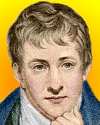 | I thank God that I was not made a dexterous manipulator, for the most important of my discoveries have been suggested to me by my failures. - Sir Humphry Davy, English chemist (born 17 Dec 1778).  |
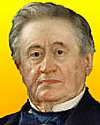 | The person who thinks there can be any real conflict between science and religion must be either very young in science or very ignorant in religion. - Joseph Henry, American physicist (born 17 Dec 1797).  |
 | There is nothing new to be discovered in physics now. All that remains is more and more precise measurement. - Baron William Thomson Kelvin, British physicist, mathematician and engineer (died 17 Dec 1907).  |
| Before you look at today's web page, see if you can answer some of these questions about the events that happened on this day. Some of the names are very familiar. Others will likely stump you. Tickle your curiosity with these questions, then check your answers on today's web page. |
 | Willard Frank Libby, born 17 Dec 1908, was an American chemist who introduced radiocarbon dating with carbon-14. For this development he was honoured with the Nobel Prize for Chemistry in 1960. In 1952, Libby determined that charcoal unearthed at Stonehenge to dated from 1848 BC.
 What is the source of carbon-14 found in organisms? |
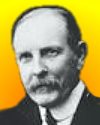 | Arthur Edwin Kennelly, born 17 Dec 1861, was an Irish-American electrical engineer who co-discovered (with Heaviside) the radio reflecting properties of a certain stratum of the atmosphere.
 Which stratum of the atmosphere did he co-discover? |
 | Sir Humphry Davy, born 17 Dec 1778, was an English chemist who made an isolation of two similar elements with electric current for the first time.
 Which two elements did he first isolate with electricity? |
 | Born as William Thomson (1824-1907) who became an influential physicist, mathematician and engineer has been described as a Newton of his era. In 1892, when raised to the peerage, he chose the name Lord Kelvin.
 Why did he choose the name Kelvin? |
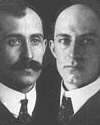 | On 17 Dec 1903, the first powered flight was achieved by the Wright brothers in their Flyer, at Kill Devil Hill, North Carolina. The aircraft stayed aloft for 12 seconds.
 To the nearest 20 feet, how far did the aircraft fly on this occasion? |
 | In 1919, Albert Porta an expert seismographer and meteorologist predicted the end of the world. As the date approached suicides and hysteria were reported throughout the world.
 For this event, what was the cause and the result he predicted? |
When you have your answers ready to all the questions above, you'll find all the information to check them, and more, on the December 17 web page of Today in Science History. Or, try this link first for just the brief answers.
Fast answers for the previous newsletter for December 16: Samoa • ultraviolet • Java Man • phosphorus • decade containing the year 1954 • New Madrid. |
 If you enjoy this newsletter, the website, or wish to offer encouragement or ideas, please send feedback by using your mail reader Reply button. If you enjoy this newsletter, the website, or wish to offer encouragement or ideas, please send feedback by using your mail reader Reply button.
Your click on a StumbleUpon, Google+ or Facebook social button on the site webpages is also a welcome sign of appreciation. Thank you for using them. |
To find citations for quotations go to the corresponding webpage by clicking on the “quotes” balloon icon. Sources for the thumbnails appear on today's webpage with the corresponding item.
� This newsletter is copyright 2013 by todayinsci.com. Please respect the Webmaster's wishes and do not put copies online of the Newsletter � or any Today in Science History webpage. (If you already have done so, please remove them. Thank you.) Offline use in education is encouraged such as a printout on a bulletin board, or projected for classroom viewing. Online, descriptive links to our pages are welcomed, as these will provide a reader with the most recent revisions, additions and/or corrections of a webpage. For any other copyright questions, please contact the Webmaster by using your mail reader Reply button. |
--
If you do not want to receive any more newsletters,
Unsubscribe To update your preferences and to unsubscribe visit
this link 


 On 17 Dec 1907, Lord Kelvin died, the British physicist who has been called the Newton of his era. His contributions to science and technology were far-ranging, and not just related to the work for which his name later was adopted as the unit of temperature (the kelvin, K). The site has two biographies that will expand your knowledge of this remarkable Victorian era scientist. The shorter one on Lord Kelvin is a webpage from the very earliest days of this site (1999). You can also choose the chapter on Lord Kelvin from Sarah Bolton's book on Famous Men of Science. Did you know how he helped make the transatlantic telegraph cable possible? Or that he was born in Ireland, though spent most of his life in Glasgow, Scotland?
On 17 Dec 1907, Lord Kelvin died, the British physicist who has been called the Newton of his era. His contributions to science and technology were far-ranging, and not just related to the work for which his name later was adopted as the unit of temperature (the kelvin, K). The site has two biographies that will expand your knowledge of this remarkable Victorian era scientist. The shorter one on Lord Kelvin is a webpage from the very earliest days of this site (1999). You can also choose the chapter on Lord Kelvin from Sarah Bolton's book on Famous Men of Science. Did you know how he helped make the transatlantic telegraph cable possible? Or that he was born in Ireland, though spent most of his life in Glasgow, Scotland? 



 What is the source of carbon-14 found in organisms?
What is the source of carbon-14 found in organisms? 
 Which stratum of the atmosphere did he co-discover?
Which stratum of the atmosphere did he co-discover? 
 Which two elements did he first isolate with electricity?
Which two elements did he first isolate with electricity? 
 Why did he choose the name Kelvin?
Why did he choose the name Kelvin? 
 To the nearest 20 feet, how far did the aircraft fly on this occasion?
To the nearest 20 feet, how far did the aircraft fly on this occasion? 
 For this event, what was the cause and the result he predicted?
For this event, what was the cause and the result he predicted?  If you enjoy this newsletter, the website, or wish to offer encouragement or ideas, please send feedback by using your mail reader Reply button.
If you enjoy this newsletter, the website, or wish to offer encouragement or ideas, please send feedback by using your mail reader Reply button. 

Δεν υπάρχουν σχόλια:
Δημοσίευση σχολίου